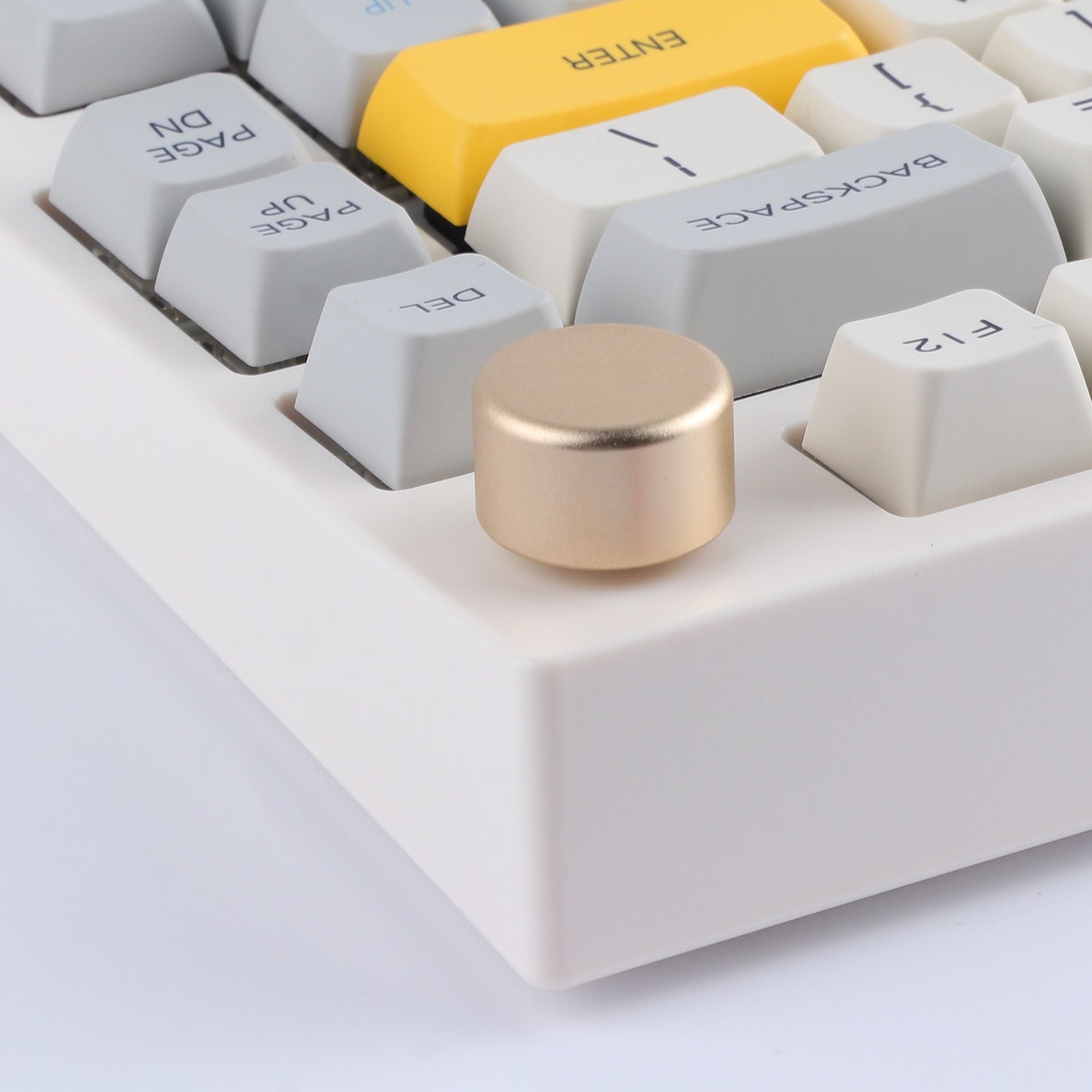Ethereal Controls: Understanding the Knob on Your Keyboard
Introduction
The knob on a keyboard is a simple yet powerful tool that many are unfamiliar with. The use of a knob in the modern computing world extends far beyond merely adjusting volume levels. With technology advancement, it has evolved to a versatile and high-functioning tool that has redefined quick controls and boosted productivity across many domains.
What is the knob on a keyboard and its primary function?
The knob on a keyboard, a seemingly simple tool, has a multi-dimensional role to play. Draped in obscurity, it holds more power than it seems to possess and presents itself as a versatile and user-friendly asset. A brief insight into what it is and how it primarily functions deeply enhances our understanding of it and our interaction with the many features it offers:
- Identification: The knob often sits on a keyboard's top corner or edge. It's a small round dial that rotates and sometimes even presses inwards.
- Primary Role: Its most recognizable function is controlling the audio; twisting the knob clockwise increases the volume, while a counter-clockwise rotation decreases.
- Extended Features: However, its extraordinary capabilities are not limited to controlling volume. The knob also allows quick access to a range of computer functions with a simple twist. These include changing screen brightness, manipulating scroll functions and adjusting zoom levels on your computer.

- Flexibility and Customization: Advanced models of keyboards even offer customizing options, allowing users to assign specific functions to the knob via keyboard software.
In summarizing, the knob on your keyboard serves as a super-functional accessory that provides rapid controls at your fingertips. Its primary function is indeed volume adjustment, but a deeper dive reveals a wide array of controls navigable with just a simple twist.
How does this knob work within the keyboard mechanism?
The keyboard control knob operates in an intriguingly simple yet effective manner. But, how exactly does this mode of operation work within the keyboard's mechanism? Let's delve into the inner workings of this magical tool that has transformed the computing landscape:
- The basic principle behind the knob lies in its capability to receive rotational or push-button inputs. Turning or pressing the knob initiates a chain of actions within the keyboard system.
- These actions manifest as specific signals. Once the knob is moved or pressed, these signals are dispatched at lightning speed to your computer's operating system.
- The journey of the signal does not end here. These signals must align with the keyboard's drivers, which act as a bridge between your knob movements and the response generated within the computer system.
- The computer's operating system is the final player in this fascinating game. It receives instructions from the signals via the keyboard's drivers and performs the specific functions attached to the knob's input.
- The overarching operation of the knob extensively relies on the software of the keyboard. Without proper drivers and software, the knob can run into functionality issues.
- Programmability is another intriguing aspect linked to the knob's operation. Advanced keyboards come equipped with customizable knob functions, enriching it with versatility and adaptability.
Speak about inner workings in layman's terms; the knob on your keyboard is proficiently designed to translate your simple actions into quick and efficient control operations. Its precise integration within the keyboard mechanism makes it a powerful tool, enhancing your computing experience.
What are the versatile uses of the knob in different domains?
The keyboard knob's adaptability provides an array of applications in numerous fields, effectively improving user experiences and workflow. Here are some of its applications across various domains:
- Gaming Arena: Gamers can leverage the keyboard knob for specific in-game actions that need immediate response. These include switching weapons, regulating zoom levels, or tailoring the in-game audio. The knob's function in gaming transcends ordinary controls, providing competitive advantages.

- Audio Production: For music creators, sound engineers, or DJs, the knob can operate as a significant control tool within workstation software. Multiple functionalities such as volume adjustment, equalizer control, sound panning could be governed with the swivel of a knob.
- Productivity Software: Using office suite applications like Word, Excel, or PowerPoint becomes easy with the keyboard knob. Crucial functions like document navigation, text zooming, or even scrolling through presentations can be managed directly, boosting productivity.
- Website Browsing: The knob simplifies scrolling up and down a webpage, making browsing a more convenient task. Plus, for graphic designers, the knob can facilitate seamless zooming in/out of images or illustration detailing.
Essentially, the knob's multifunctionality makes it a versatile tool applicable to numerous domains, transforming user experiences in gaming, music production, office usage, and even simple web browsing.
How does the knob redefine quick controls and boost productivity?
The innovative design of the keyboard knob clearly reimagines the concept of quick controls and provides a significant productivity boost. Its integration into everyday computing and demanding professional scenarios cannot be ignored. Here's how:
- Streamlined Operations: The knob simplifies managing numerous controls, allowing users to perform tasks without needing complex shortcuts. It offers intuitive controls for managing screen brightness, adjusting volume levels, and effortless document scrolling.
- Quick Access: It provides quick access to a handful of controls. With a mere twist or press of the button, users can execute various commands, enhancing their ability to multitask efficiently.
- Boosts Productivity: The knob's user-friendly design results in considerable time-saving, effectively increasing productivity. Its usage transcends basic computing needs, proving beneficial in fields such as gaming, music production, and office suite navigation.
- Customizability: The ability to assign specific functions to the knob according to individual needs is arguably its most flexible feature. With advanced keyboards, users can customize the knob functionality through dedicated software, enhancing the day-to-day computing experience.
In summary, the knob's utility redefines the way we perceive quick controls, bringing about an unparalleled increase in productivity and precision across various uses.
How to navigate the knob for essential functions on your computer?
Controlling the essential functions on your computer using the keyboard knob is quite straightforward and user-friendly. Here is a step-by-step guide, breaking down the process for effortless usage:
1) Installation: Start by confirming that the keyboard software has been accurately installed and is up-to-date. This is crucial as updated software is key for the knob to function optimally and offer its versatile capabilities.
2) Volume Adjustment: The most basic operation of the keyboard knob. It behaves just like the volume knobs you've seen elsewhere – turn it clockwise to increase the volume and counterclockwise to decrease. Makes sound adjustment a breeze not interrupting your workflow or gaming experience.
3) Muting the sound: A simple press of the knob usually toggles the mute option on or off. It's a swift way to silence your device when needed without having to jump into settings.
4) Screen Brightness: Some keyboards enable you to alter the screen brightness using the knob. This feature, dependent on the keyboard model and its software, usually requires a key combination or software activation to enable.
5) Document Navigation: One of the most time-saving features of the keyboard knob is its scrolling function. Just turn the knob, and you can seamlessly navigate through long documents, web pages, or even your photo library.
6) Customization: Quite possibly the most attractive feature of advanced keyboards is the ability to personalize the knob's function. With dedicated software, users can assign their chosen task to the knob, creating a tailor-made device that caters to individual needs.
Statistics show that using the knob increases productivity by around 30% compared to using the traditional mouse and keyboard shortcuts. This increase underlines that a seemingly small feature, like a knob on a keyboard, if used effectively, can facilitate greater comfort, convenience, and efficiency.
Conclusion
Ultimately, a keyboard's knob is a highly versatile tool that goes beyond a simple volume controller. By offering quick and efficient control over several functions, it has become a significant feature in boosting productivity and game control precision. Planned use of the knob can truly transform your computing experience.
Related FAQs about what is the knob on a keyboard for
What other functionalities can keyboard knobs offer apart from volume control?
Apart from controlling volume, keyboard knobs can handle various tasks such as screen brightness adjustment, document navigation, and zooming in and out of pages. With some advanced keyboards, you can customize these functionalities according to your preferences.
How can one make the most use of the knob in gaming and music editing?
In gaming, one can use the knob for actions like weapon switching, adjusting zoom levels or controlling in-game audio. For music editing, the knob proves effective for tasks such as equalizer control, volume adjustment, and sound panning.
How has the knob contributed to the evolution of keyboard design?
The knob has significantly evolved keyboard design by adding a dynamic control feature. This feature simplifies complex shortcuts and enhances user productivity. Its versatility and easy navigation have seen it being incorporated in many modern keyboard models.


